Capitalism is Saving the Planet Part 5: American Farmers Are Saving the Trees Through Innovation
On Tuesday, I wrote about how a recent study has found that there are more trees and vegetation today than there was 30 years ago, despite the fact that there are about 3 billion more people on the planet today than there was in 1980.
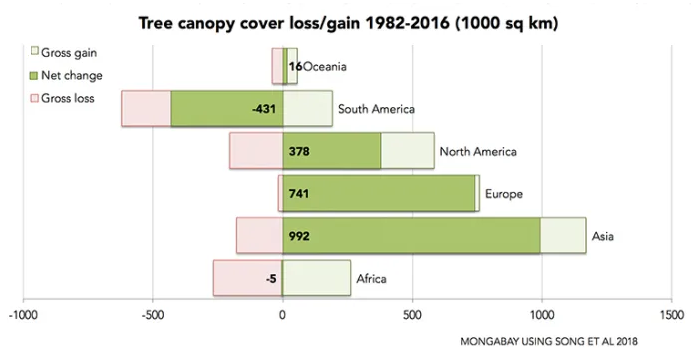
One of the key reasons for this regrowth of trees around the world was agricultural abandonment, meaning we are using fewer acres to grow our food and these acres are now free for the trees. If one were to assume the gloom and doomers are correct, this should mean that food prices have skyrocketed and that there are more hungry people today than 30 years ago, but nothing can be further than the truth.
In the real world, better agricultural practices and technology, many of them pioneered in the capitalist United States, mean we can grow much more food on a lot less land. This has resulted in people spending a much smaller percentage of their incomes on food, fewer people going hungry, and a smaller environmental footprint for our farms.
It is an unqualified win for both the environment, and human kind.
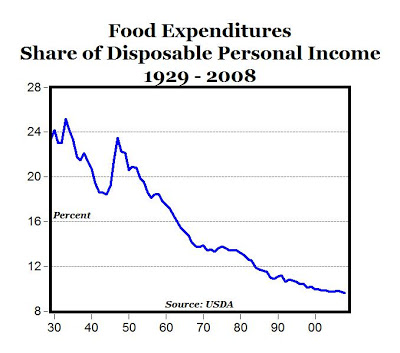
The graph below from Our World in Data shows that after increasing for more than 100 years, the amount of land in crop production in the United States has been in a free fall since 1960.
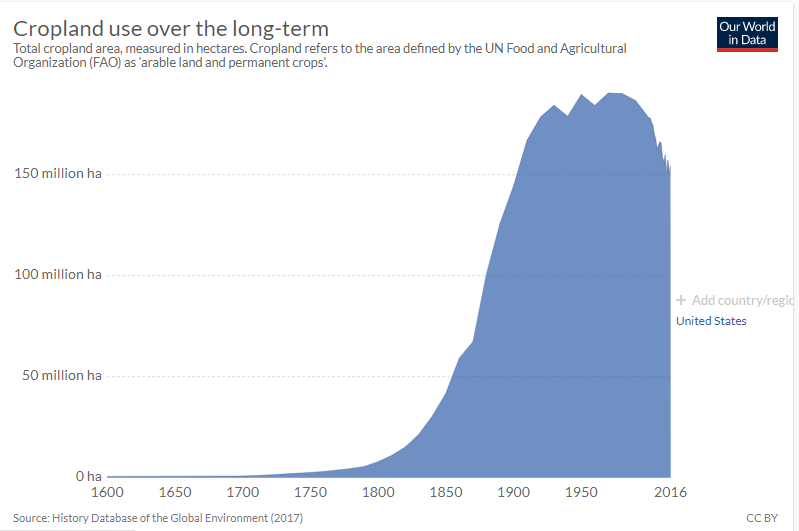
Furthermore, the United States is producing more food per acre today than at any other point in the nation’s history, and yields are increasing exponentially.
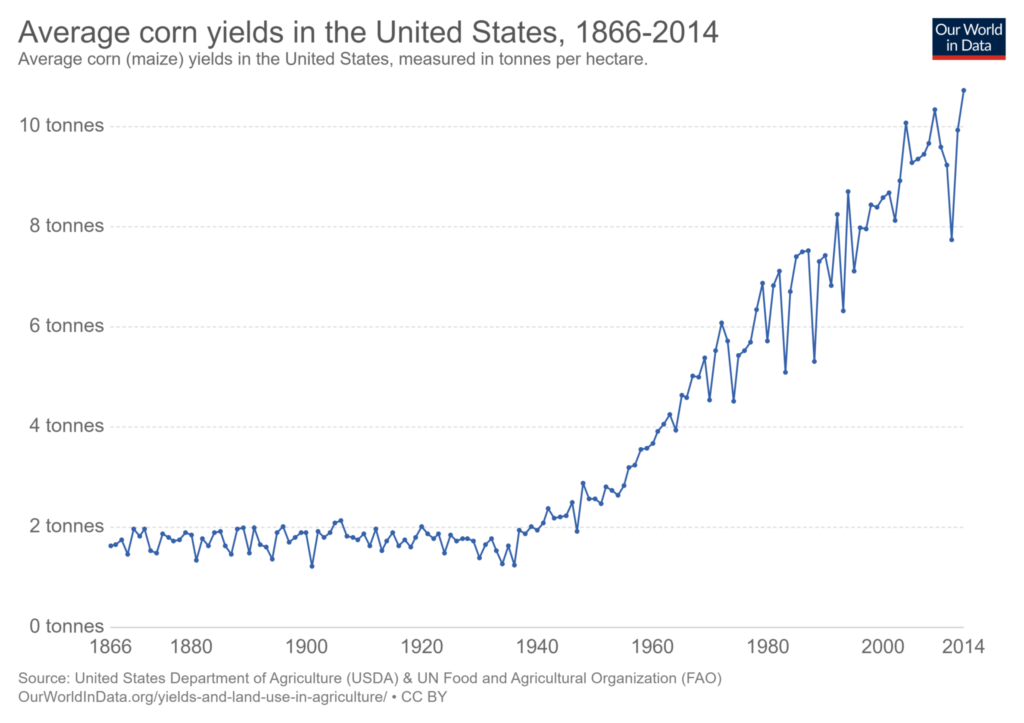
The good news isn’t just limited to the USA, it’s occurring around the globe, as the amount of land needed to produce the same amount of food has fallen by 68 percent since 1961, and this will only increase as modern farming techniques are exported to the developing world, and more scientifically advanced crops are developed to increase yields while also reducing the amount of pesticides needed to keep insects from eating the crops.
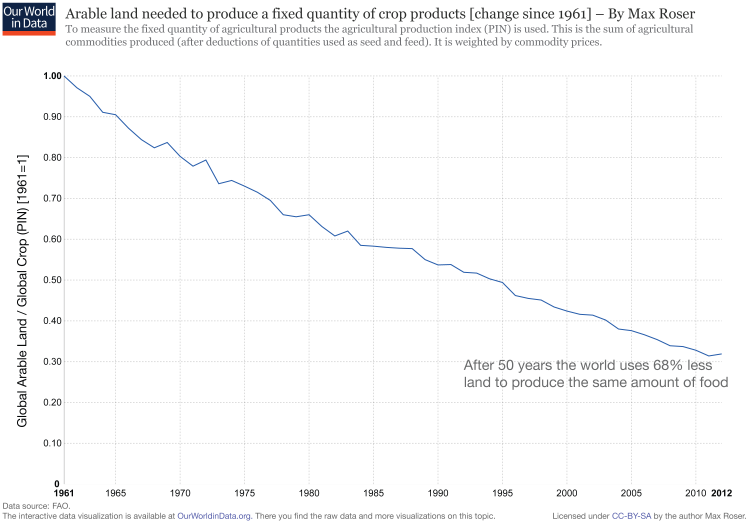
For example, a recent study found that adoption of genetically modified crops reduced chemical pesticide use by 37 percent, increased crop yields by 22 percent, and increased farmer profits by 68 percent.
Increasing farmer profits is the most important part of this sentence because it shows that profits do not preclude positive environmental outcomes. In fact, the profit motive increases the incentive for farmers to adapt these technologies faster.
One would think that environmentalists would be thrilled that we are increasing farmer profits, and growing more food on fewer acres using fewer pesticides, but you would be wrong. The biggest obstacle to continued progress for growing more food on fewer acres are environmental regulations that seek to restrict the use of genetically modified agricultural products.
In total, 19 members of the EU, including Germany and France, voted in late 2015 to prohibit the cultivation of eight new biotech crops in their countries, and several states including California, Connecticut, Maine, Oregon and Washington have sought measures to make it more difficult to grow these biotech crops.
Ironically, many of the same people who oppose these biotech crops on environmental grounds advocate for organic farming.
This is problematic, because the table below shows yields on organic crops are far lower, meaning we would need to use a lot more acreage to grow the same amount of food, which means it could be plausibly argued that organic crops are actually worse for the environment than conventional or biotech crops.
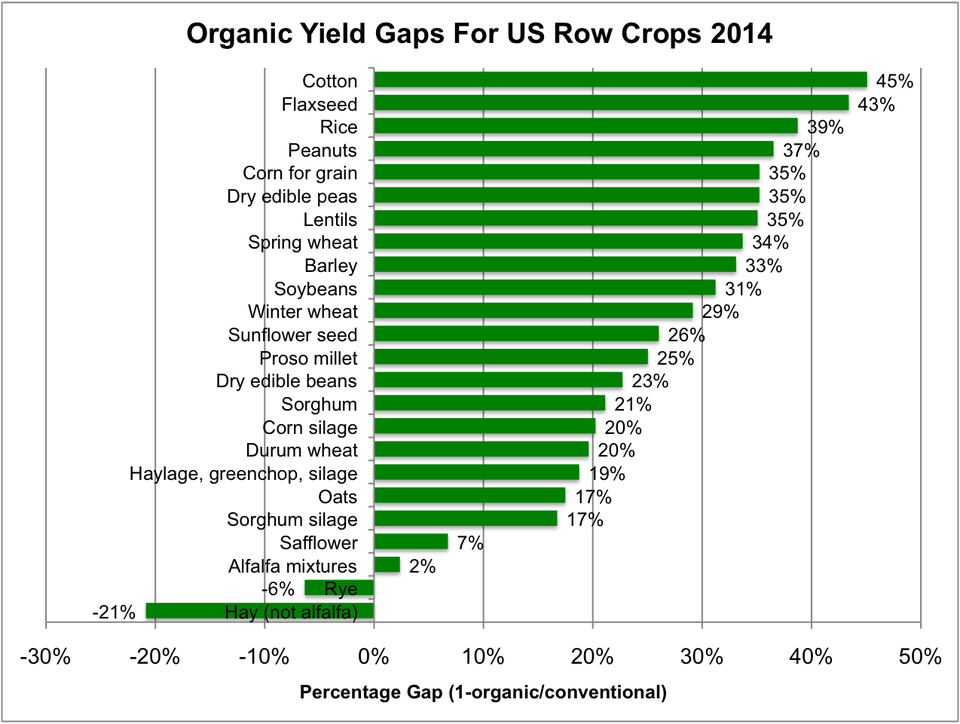
It’s ok to buy organic food if you think it has health benefits and you’re inclined to spend the extra cash on it, but the people who pretend that doing so is better for the environment are misguided. Using less efficient farming methods results in a larger number of acres being used to grow crops.
Farming is an example of how industries can improve efficiency and reduce their environmental footprint, and increase the profitability of their businesses, as long as government doesn’t get in the way.